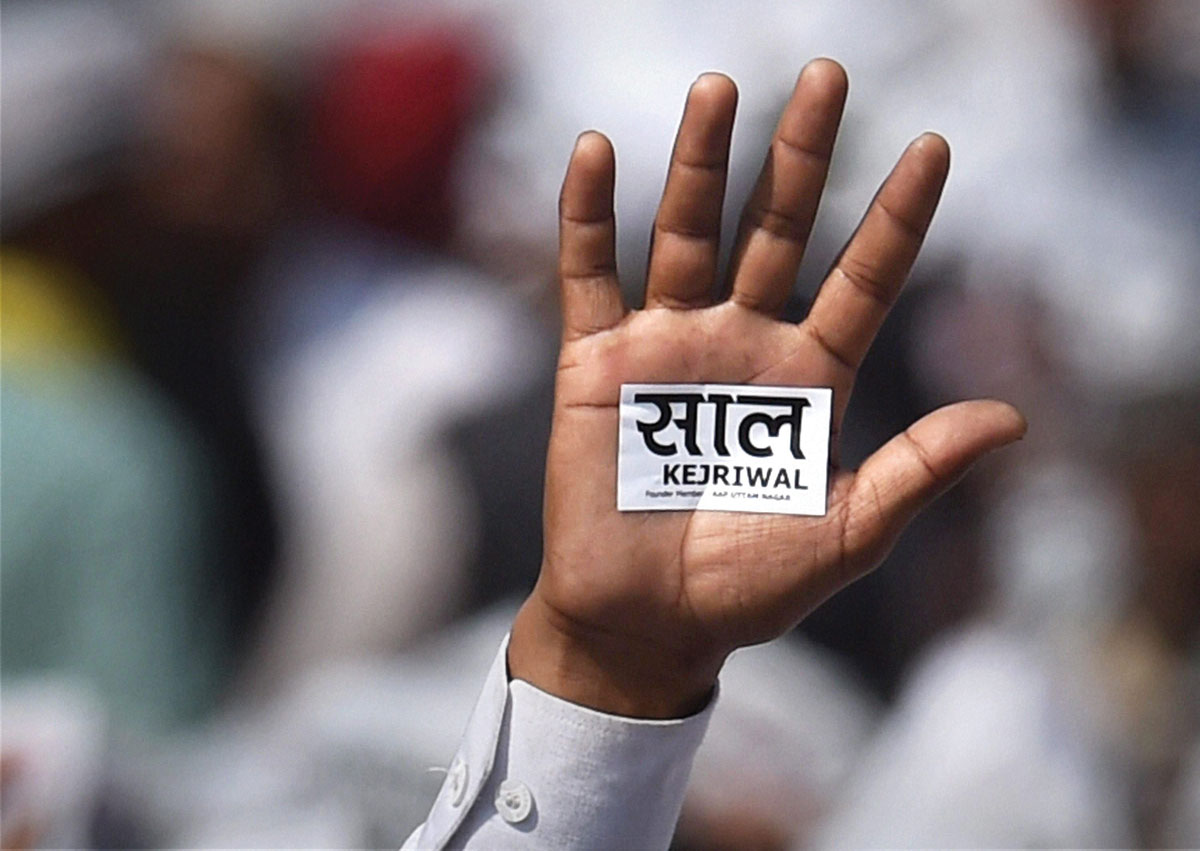CLEAN SWEEP
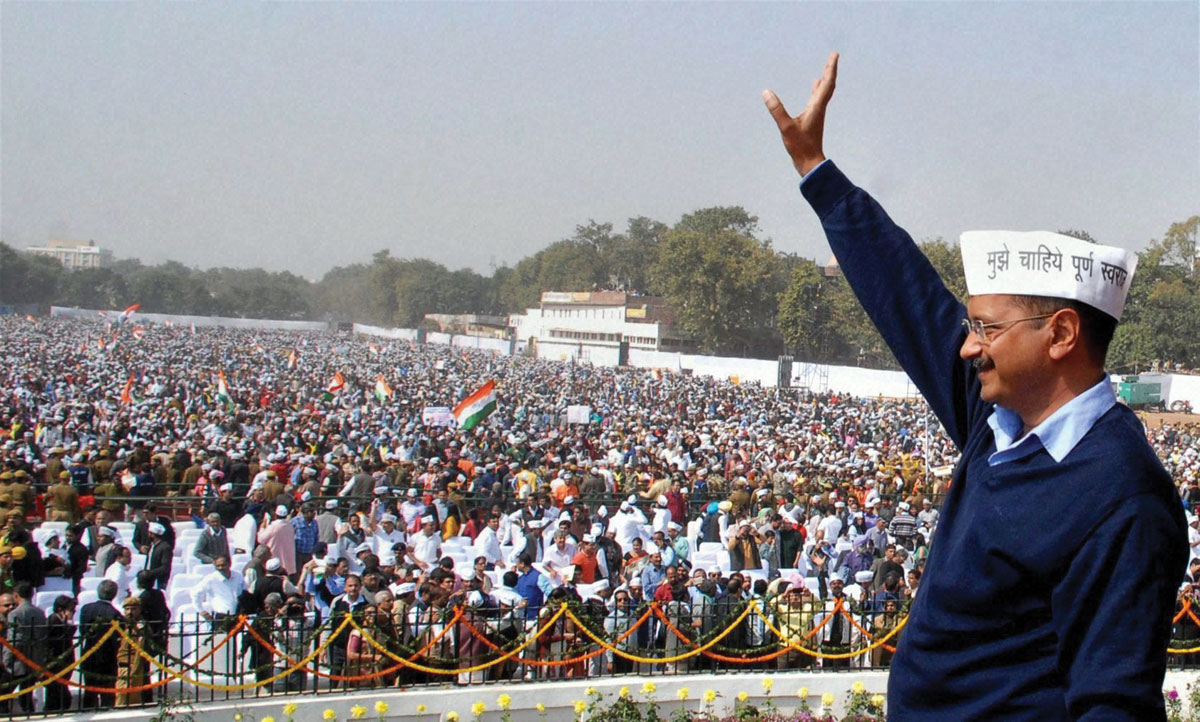
Arvind Kejriwal-led Aam Aadmi Party (AAP) scored a landslide electoral victory in the Delhi State Assembly Elections in early February 2015 by snatching 67 out of 70 seats and leaving rivals, Bharatiya Janata Party (BJP) with just 3 seats and decimating the Congress to a zero, writes Priyanka Bhardwaj.
The win comes exactly a year after he had resigned as Chief Minister of this city state to unsuccessfully foray into the national arena during the 2014 Lok Sabha elections.
However, unlike the 2013 verdict that was fractured, the 2015 results yielded a clear majority to AAP.
In anticipation of the win the party’s headquarters in East Patel Nagar in West Delhi witnessed a mass thronging of auto-rickshaw-wallahs who have been core supporters and agents of its electioneering in both the 2013 and 2015 state polls.
Expressing jubilance, rarely seen in the community of these public utility drivers, Prajapat Chand, 46 of Ghitorni said, “I knew AAP would win and this is our victory. I have spent Rs.1,500 (approximately $25) in decorating my auto-rickshaw with flowers and posters of Kejriwal.”
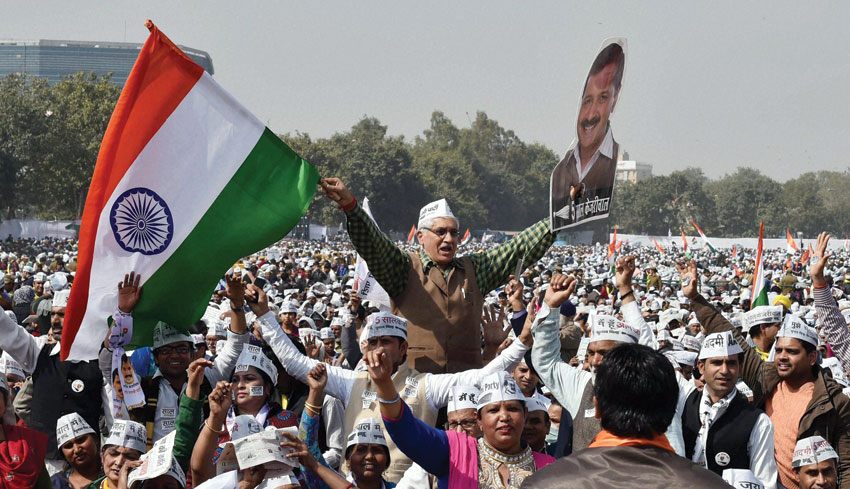
These drivers believe that, “This AAP government will work for aam aadmi (common man) by providing a corruption free government and that their vehicles would not be seized on petty excuses, nor would they have to pay bribes to the police to remain in the business.”
On the day of announcement of the results auto-drivers were seen celebrating the AAP victory, holding brooms, dancing, singing, raising slogans, and wearing AAP’s trademark white cap indicating where their votes and hope lie and what therefore went into ensuring “Paanch Saal Kejriwal” (five year term to Kejriwal)”
As for Kejriwal, it had not been easy to shed off the tag of a “quitter” and to this end he repeatedly apologized to the people for quitting the first term at each of his 110 public meetings.
Most likely this helped structure an honest image of AAP leaders and in combination with their popular promises of free water, cheap power and graft free government (albeit declared financially unrealistic) as enlisted in their manifesto, a sizeable section of votes swung in their favor.
Senior party leader, Manish Sisodia admits, “The message we sent out was clear: the focus is on governance and Kejriwal is prepared to stay and has a singular aim of staying through its full term.”
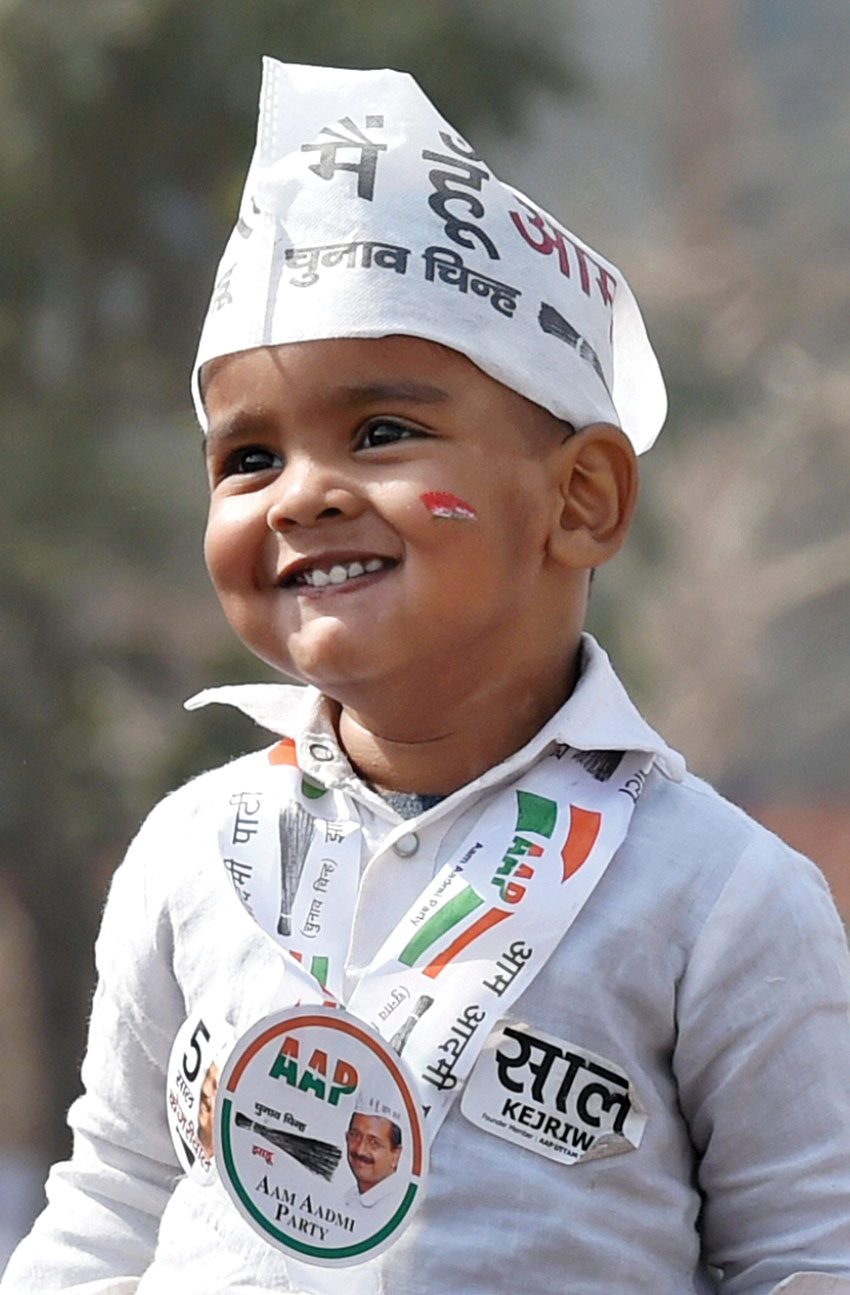
Much went into preparation for the polls and Sisodia says, “Since last May we have been trying to recruit more volunteers. In 2013 15,000 AAP volunteers were stationed across 3,500 polling stations, but this time the numbers swelled to 35,000 to 40,000.”
In contrast there was confusion galore in the BJP political tarmac, with no election manifesto in place, party candidates being announced rather late, a new entrant Kiran Bedi (of Indian Police Service and Anna Hazare-led anti-corruption movement fame), and its 300 Members of Parliament making controversial statements or indulging in hominem politics by attacking Kejriwal instead of focusing on a positive mandate for the people.
Possibly BJP’s overconfidence and underplay of the Narendra Modi brand that has been instrumental in consolidating the BJP rule across the length and breadth of the country transformed the Delhi state polls into a “Kiran Vs. Kejriwal” fight and thus accrued an unforeseen advantage to the AAP.
Also with the AAP emerging as the third viable alternative to the BJP and the Congress, it bagged almost twice the vote share – from 29.49 percent to 54.3 percent and an increase in 39 seats since last polls.
The polls saw an overall of 1,300,000 electorate determining the fate of 673 candidates, with 36,000 “None of the Above” (for voters who did not wish to vote for any political candidate in the fray) votes being polled, constituting 0.4 percent of the total votes cast as compared to 49,000 recorded in 2013.
Interestingly though, the BJP has won just 3 seats its vote share has dipped by just one percent, from 33.07 percent in 2013.
However, the Congress stands pulverized with a vote share of 9.7 percent from 24.55 percent.
Last year in the Lok Sabha polls, the Congress vote share was at 15 percent and since then the Delhi loss is the fifth successive debacle experienced in Haryana, Maharashtra, Jharkhand and Jammu & Kashmir where it was in power in a coalition.
While enough has been said of the Congress going nonstop on its self-destructive track and losing every inch on the Indian political map, the BJP’s loss is something that would not rest lightly in its mind space as it stands eluded of a majority in Maharashtra and Jharkhand, and in Rajasthan local polls it faced a tough contender in the form of the Congress.
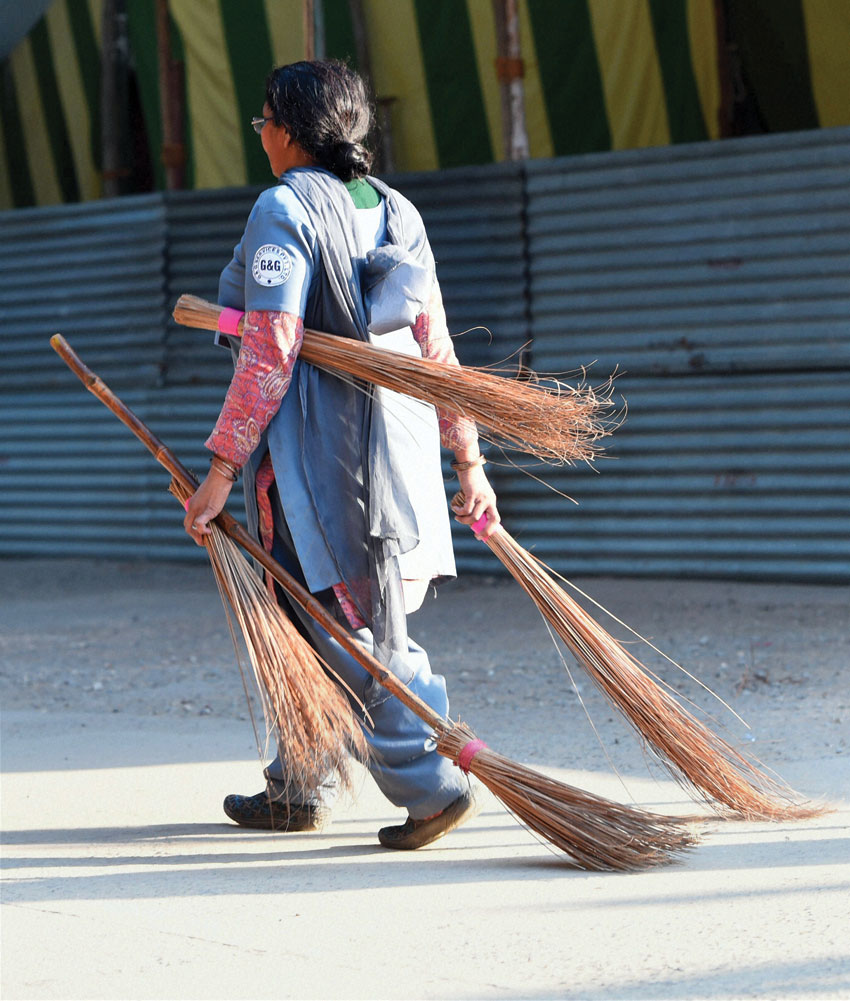
It is anyone’s guess that the BJP strategists will brainstorm into what may cramp its strength in the run up to polls in Bihar (in October) and Uttar Pradesh (in 2017).
There may not be a singular reason for the BJP failure but the party would do well to heed to the microcosm nature of Delhi – a mini secular India, where media plays a significant role in shaping opinions and perceptions.
In this context, the silence of Modi in matters of Church vandalism and BJP’s unbridled allowance to loony fringe of the saffron establishment to occupy media space with their talk of “ghar wapsi” and “ramzaade-haramzade” have definitely made the urban educated voters grossly uncomfortable and bear upon their voting behavior.
As far as Kejriwal is concerned, he has scripted his second success based on the clubbing of poor voters who voted him in reaction to skyrocketing prices and the educated class voters who feared a dictator.
Now it will be a wait and watch to see how during the course of his rule Kejriwal’s attitude and understanding enable him to deliver in the face of confrontation with another non-dynastic leader, Modi whose central administration controls land and police of Delhi, and Kejriwal retains the political capital that he has so surprisingly won.
